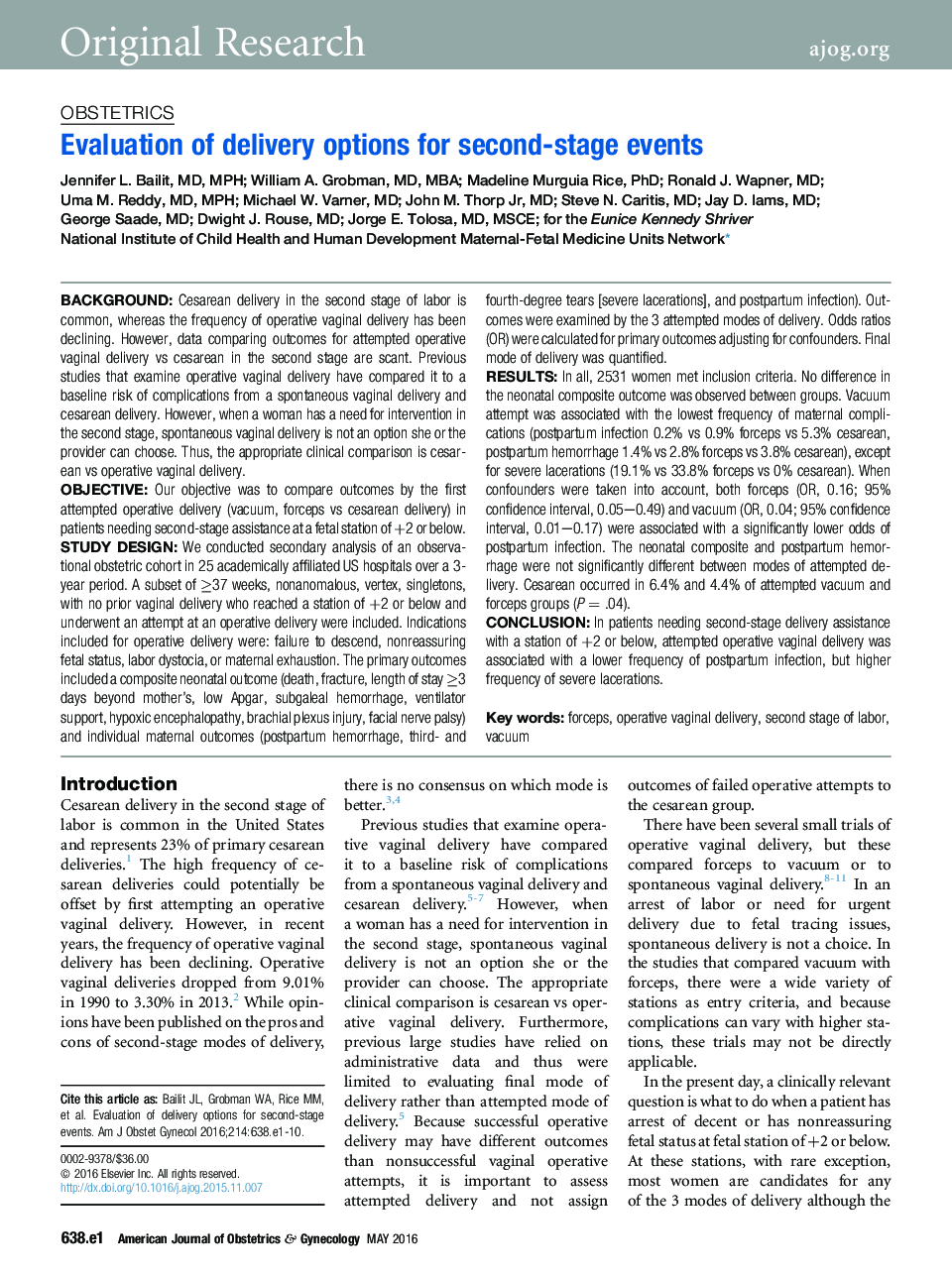| کد مقاله | کد نشریه | سال انتشار | مقاله انگلیسی | نسخه تمام متن |
|---|---|---|---|---|
| 6144038 | 1594891 | 2016 | 10 صفحه PDF | دانلود رایگان |
BackgroundCesarean delivery in the second stage of labor is common, whereas the frequency of operative vaginal delivery has been declining. However, data comparing outcomes for attempted operative vaginal delivery vs cesarean in the second stage are scant. Previous studies that examine operative vaginal delivery have compared it to a baseline risk of complications from a spontaneous vaginal delivery and cesarean delivery. However, when a woman has a need for intervention in the second stage, spontaneous vaginal delivery is not an option she or the provider can choose. Thus, the appropriate clinical comparison is cesarean vs operative vaginal delivery.ObjectiveOur objective was to compare outcomes by the first attempted operative delivery (vacuum, forceps vs cesarean delivery) in patients needing second-stage assistance at a fetal station of +2 or below.Study DesignWe conducted secondary analysis of an observational obstetric cohort in 25 academically affiliated US hospitals over a 3-year period. A subset of â¥37 weeks, nonanomalous, vertex, singletons, with no prior vaginal delivery who reached a station of +2 or below and underwent an attempt at an operative delivery were included. Indications included for operative delivery were: failure to descend, nonreassuring fetal status, labor dystocia, or maternal exhaustion. The primary outcomes included a composite neonatal outcome (death, fracture, length of stay â¥3 days beyond mother's, low Apgar, subgaleal hemorrhage, ventilator support, hypoxic encephalopathy, brachial plexus injury, facial nerve palsy) and individual maternal outcomes (postpartum hemorrhage, third- and fourth-degree tears [severe lacerations], and postpartum infection). Outcomes were examined by the 3 attempted modes of delivery. Odds ratios (OR) were calculated for primary outcomes adjusting for confounders. Final mode of delivery was quantified.ResultsIn all, 2531 women met inclusion criteria. No difference in the neonatal composite outcome was observed between groups. Vacuum attempt was associated with the lowest frequency of maternal complications (postpartum infection 0.2% vs 0.9% forceps vs 5.3% cesarean, postpartum hemorrhage 1.4% vs 2.8% forceps vs 3.8% cesarean), except for severe lacerations (19.1% vs 33.8% forceps vs 0% cesarean). When confounders were taken into account, both forceps (OR, 0.16; 95% confidence interval, 0.05-0.49) and vacuum (OR, 0.04; 95% confidence interval, 0.01-0.17) were associated with a significantly lower odds of postpartum infection. The neonatal composite and postpartum hemorrhage were not significantly different between modes of attempted delivery. Cesarean occurred in 6.4% and 4.4% of attempted vacuum and forceps groups (P = .04).ConclusionIn patients needing second-stage delivery assistance with a station of +2 or below, attempted operative vaginal delivery was associated with a lower frequency of postpartum infection, but higher frequency of severe lacerations.
Journal: American Journal of Obstetrics and Gynecology - Volume 214, Issue 5, May 2016, Pages 638.e1-638.e10
